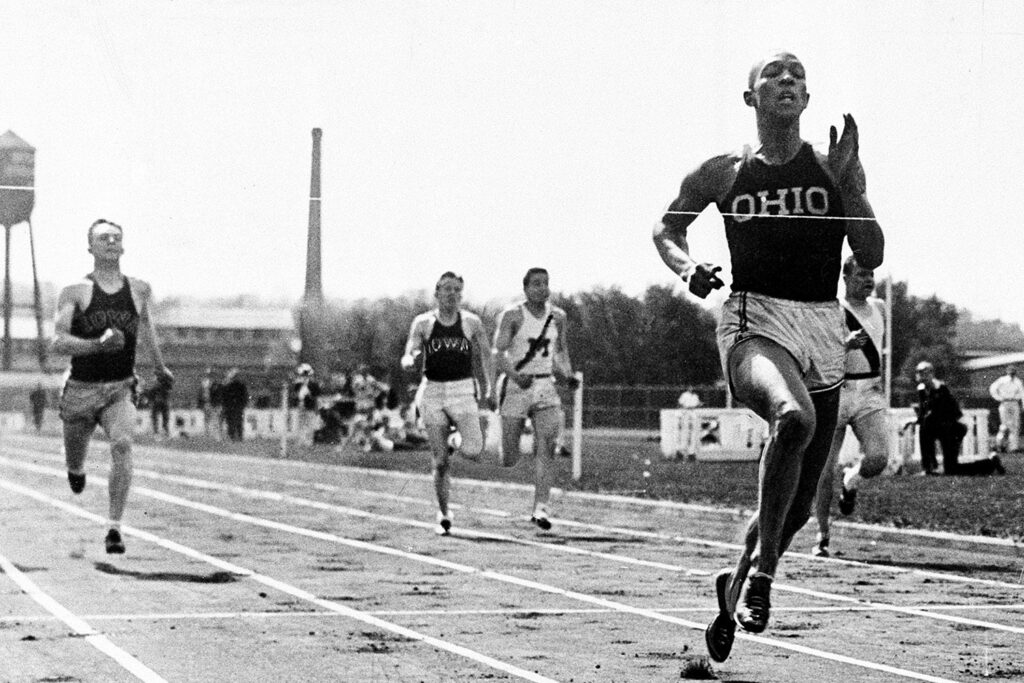Some people call it “The Greatest Day in Sports History.” Others narrow it down and call it “The Greatest 45 Minutes in Sports History.” However you look at it, the feat that sprinter Jesse Owens accomplished on May 25, 1935, in Ann Arbor will never be repeated.
Competing in the Big Ten track championships that day at the University of Michigan, Owens broke three world records and tied another—all in the span of just 45 minutes.
Four world records in less than an hour. Top that! In the 90 years since it happened, nobody in any sport has come close.
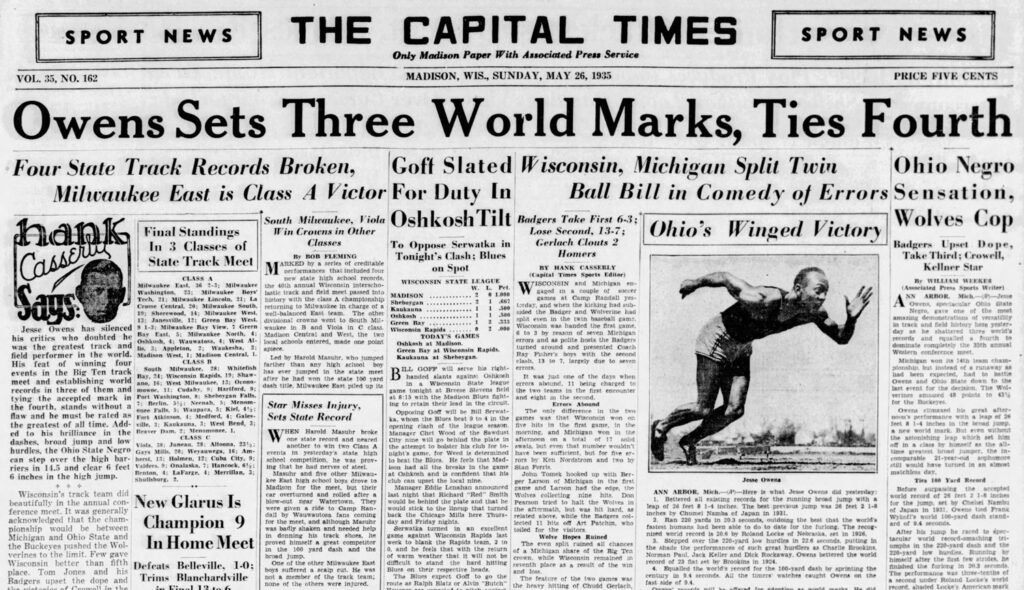
What makes the accomplishment ironic, of course, is that Jesse Owens was competing for the Ohio State Buckeyes and had his greatest day ever on the campus of their hated archrival, the University of Michigan.
Coming into the 1935 outdoor track season, Owens was a sophomore at Ohio State and the most famous track athlete in America. Freshmen couldn’t compete in Big Ten sports back then, so Owens was sidelined for the 1934 season. Every track fan in America knew about him, though, and they couldn’t wait to see him finally hit the track in 1935.
It all came to a head on May 25, 1935, as the Big Ten’s best all headed to U-M’s Ferry Field for the league championships. Michigan was favored to win the meet, but all eyes were on Owens.
The Logansport Pharos-Tribune in Indiana previewed the meet: “Owens, termed by some the greatest man ever to don shorts and spikes, will finish among the leaders—possibly the winner himself—in the dashes, low hurdles and broad jump if his past performances are any criterion.”
That’s exactly what happened—and then some.
At 3:15 p.m. that Saturday, Owens overcame a slow start in the 100-yard dash to win it easily in 9.4 seconds, tying the world record.
At 3:25 p.m., he took his one and only try in the long jump and smashed the world record by more than half a foot, jumping 26 feet, 8¼ inches. That record would stand for another 25 years.
At 3:34 p.m., he took off in the 220-yard dash final and won it in 20.3 seconds, destroying the old world record of 20.6 seconds.
Then at 4 p.m., he completed his day by running in the finals of the 220-yard low hurdles, running a 22.6 to become the first person ever to break 23 seconds.
Forty-five minutes. Four world records. Michigan won the meet, but Owens won the day.
The next morning, he was on the front page of every newspaper’s sports section in America. A columnist for the Jackson Citizen-Patriot, known only as “Brick,” wrote, “I don’t believe that I’ll ever see one athlete break three world records in one afternoon again, if I live to be 100.”
You didn’t, Brick.
Jesse Owens next went to Adolph Hitler’s Berlin Olympics in 1936 and won four gold medals, cementing his legacy as the greatest track athlete in history.
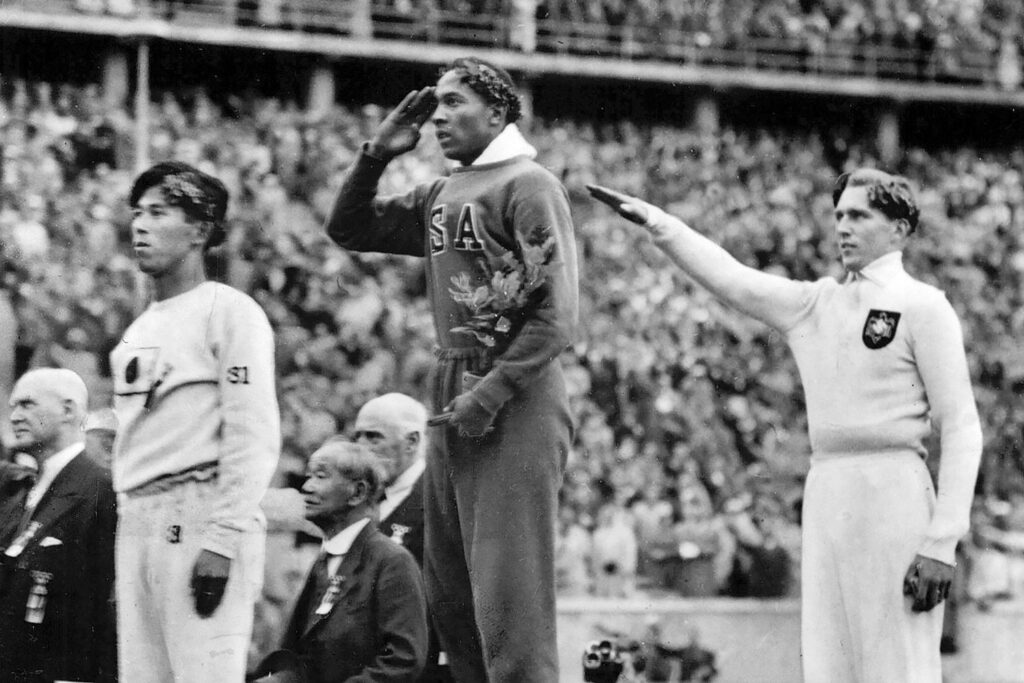
But when President Franklin Roosevelt, a Democrat, honored the Olympic team at the White House, he decided to invite only the white athletes. The 1936 election was coming up, and Roosevelt didn’t want to do anything to upset Southern white voters, so he didn’t invite Jesse Owens or the other black athletes on the team.
It was a snub that Owens felt deeply for the rest of his life. As he said later, “Hitler didn’t snub me. It was our president who snubbed me. The president didn’t even send me a telegram.”
The affront also turned Owens into a lifelong Republican. In the fall of 1936, he actively campaigned for Republican candidate Alf Landon, who was running against Roosevelt.
While he’s remembered best for his four gold medals in Berlin, the events of May 25, 1935, would continue to play a huge role in Owens’s life. And even though he was an Ohio State icon, it was people from the University of Michigan who would make things right for him.
Jesse Owens passed away in 1980 at the age of 66 of lung cancer (he was a lifelong smoker). Five years later, the University of Michigan decided to honor Owens’ record-setting day by erecting a memorial at the Ferry Field track.
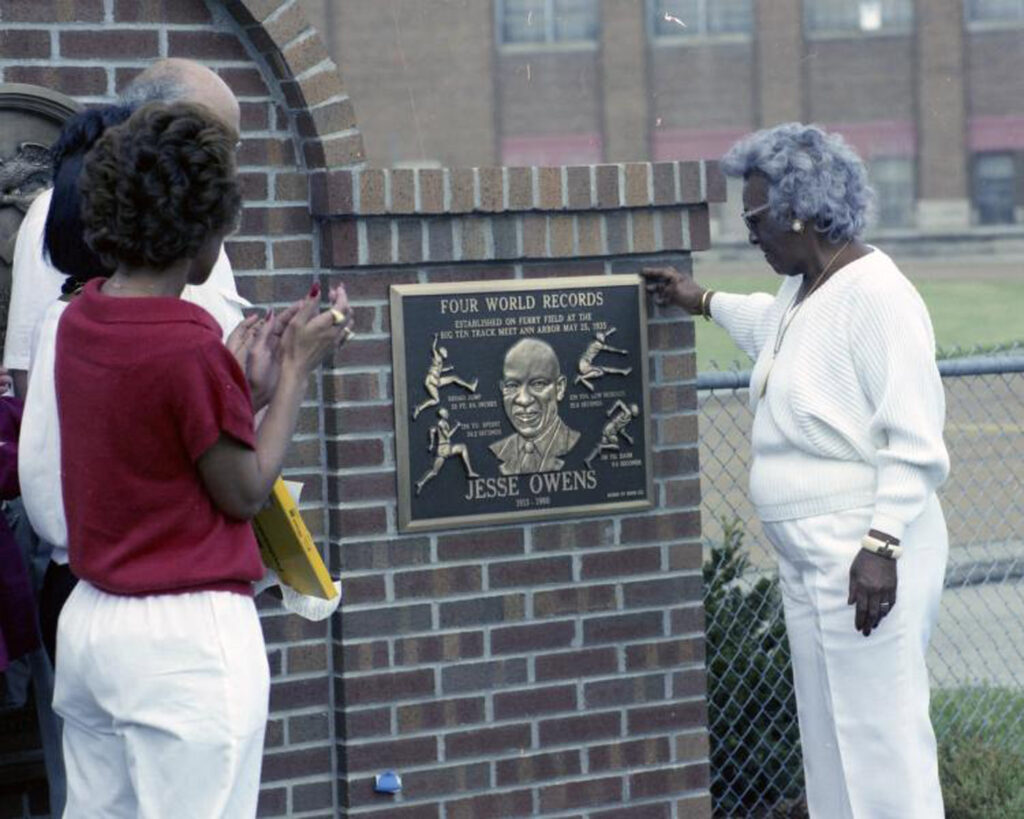
It was the idea of U-M athletic director Don Canham, a former U-M track star who had great respect for Owens.
Owens’s widow, Minnie Ruth, was on hand in 1985 when the memorial was unveiled, and even today, people marvel at the fact that there’s a memorial to an Ohio State Buckeye on the University of Michigan campus.
But that’s how respect works, even in the midst of the greatest rivalry in sports.
Nine years earlier, though, an even greater honor came to Jesse Owens, and once again, it came from a Michigan man.
In 1976, the president of the United States was a former football player from U-M named Gerald Ford. On Aug. 5, 1976, President Ford invited the U.S. Olympic Team to the White House.
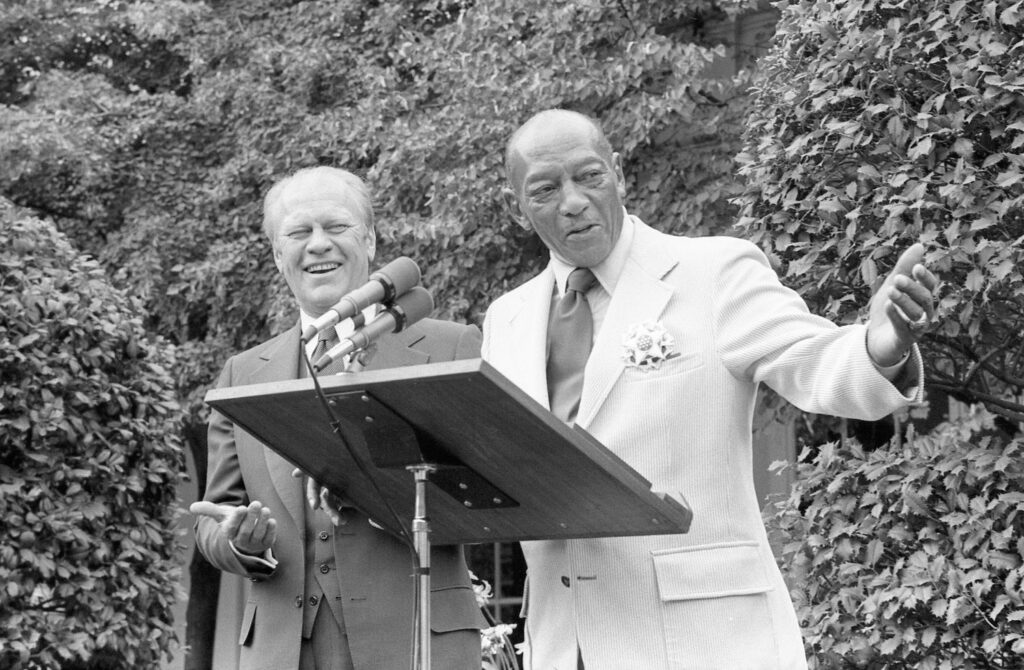
All of them—black, white, everyone. The Montreal Games had just wrapped up four days earlier, and the Americans had a splendid showing. Led by the likes of Bruce Jenner, Sugar Ray Leonard, and Edwin Moses, the U.S. won 94 medals, second only to the Soviet Union’s 125.
So President Ford happily invited all of them to the White House.
Ford knew his history well, and he knew that 40 years earlier, Owens had been snubbed by the guy in the White House. He wanted to make it right. So a Wolverine invited an Buckeye to the White House.
And not only was he inviting Owens to be there, but as a total surprise to everyone, Ford was going to present him with the Presidential Medal of Freedom, the highest honor a civilian can receive. So midway through the ceremony, the Wolverine asked the Buckeye to come forward and told him what was happening.
It was also during that moment that Gerald Ford revealed something that nobody had known before. The future president was actually in the crowd that day at Ferry Field on May 25, 1935. He was a graduating senior at U-M and had come there to watch his good friend Willis Ward compete.
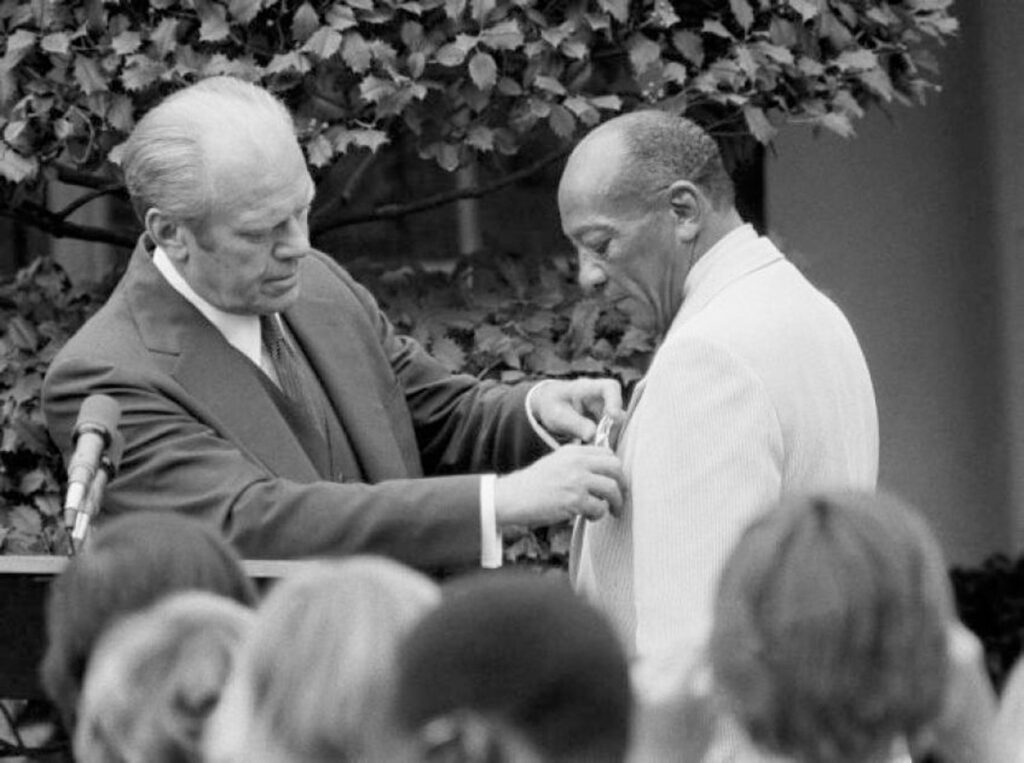
He got to see Ward win the high jump. He also got to see the skinny kid from Ohio State set four world records in 45 minutes. And he told the crowd at the White House all about it.
“I don’t have to tell any of you who studied the history of the Olympics of his phenomenal career,” Ford said. “I happened to be a student at the University of Michigan when Jesse Owens was a student at Ohio State—as (OSU coach) Woody Hayes calls it, that school up north.”
“I saw Jesse Owens at a Big Ten track meet in Ann Arbor, as one of some 10,000 or 12,000 spectators, when he broke three world records and tied a fourth,” Ford said. “His performance that day in the broad jump was not equaled for 25 years.”
With that, the football player from Michigan awarded the medal to the track star from Ohio State. The events of May 25, 1935, had come full circle.
Buddy Moorehouse teaches documentary filmmaking at Hillsdale College.
